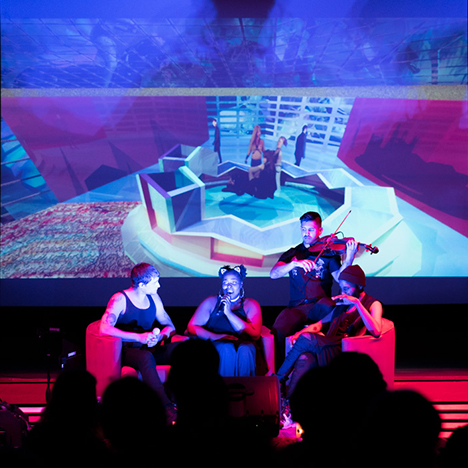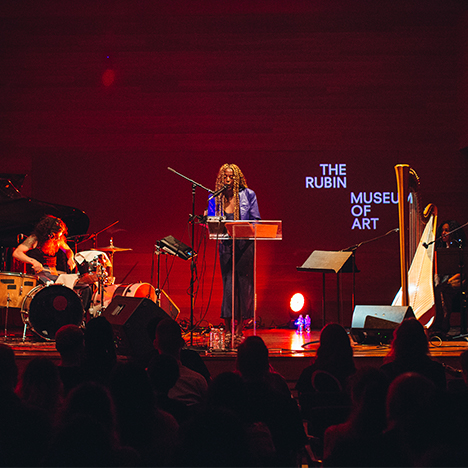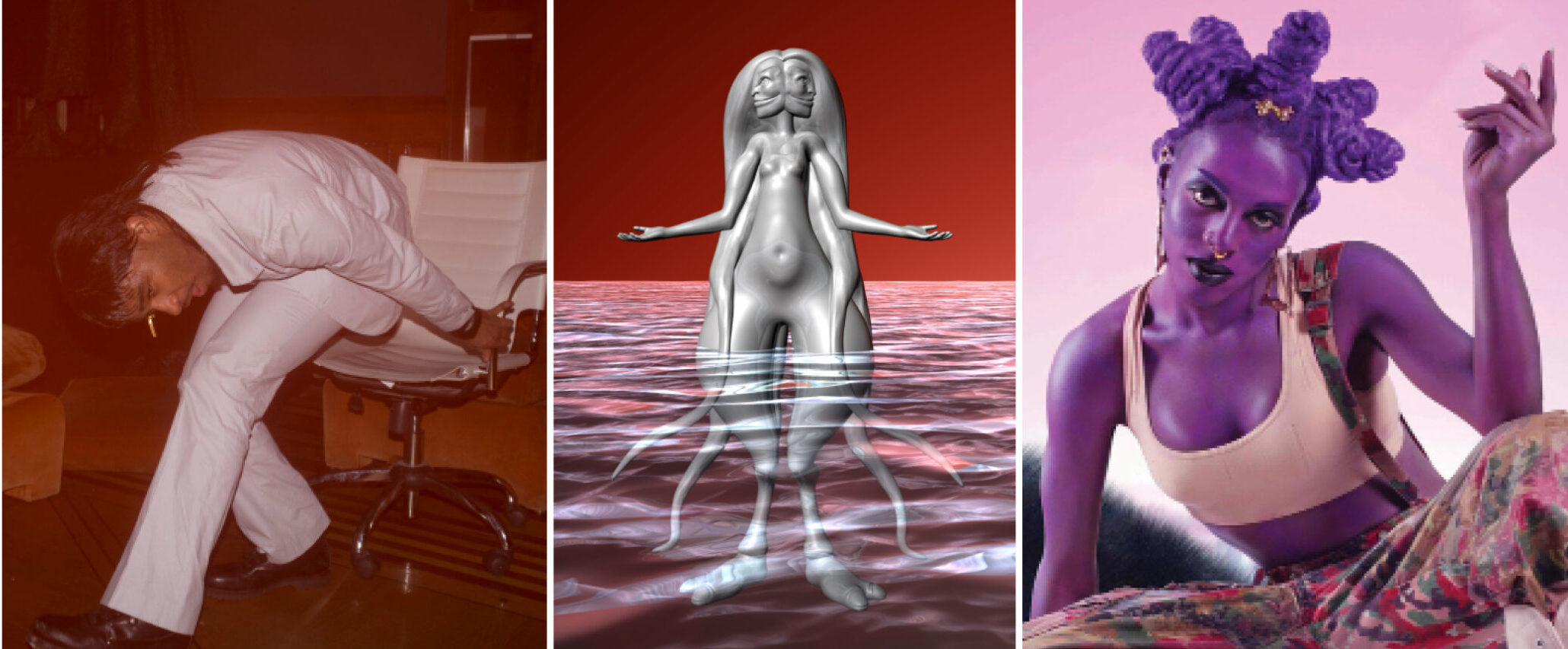
The Rubin recently presented the performance art series Refiguring The Future, featuring works in progress by three acclaimed New York artists centered on the concept of alternative futures. Jacolby Satterwhite, Juliana Huxtable, and Morehshin Allahyari are known for shining a spotlight on traditionally marginalized stories, generating new pathways to freedom and inclusivity. Through their own personal and cultural mythologies, they invented new narratives that transcend the boundaries of gender, sex, and race.
The projects in the series used futuristic imagery and language, along with elements of realism that allowed the viewer to contemplate what it means to be human, presenting a future world that feels perhaps not so distant from our own.

Jacolby Satterwhite performing Blessed Avenue at the Rubin Museum of Art with Nick Weiss, Alissa Brianna, Brody Blomquist, Cedric Antonio, and Forrest Wu. Photo by Asya Danilova
Friday, May 4, 2018
Satterwhite’s performance Blessed Avenue addressed themes of love, healing, and acceptance. The collaborative album by PAT (Patricia Satterwhite, Jacolby Satterwhite, and Nick Weiss) reimagined acapella songs originally composed by Satterwhite’s mother, Patricia, as she struggled with mental illness. In collaboration with the electronic composer and musician Nick Weiss, the performance created a live score for Satterwhite’s latest musical and animated film. In an electronic and visually stirring odyssey, it depicted a phantasmagoria of bodies and machines entangled in choreographic sexual acts. The scenes filled with sci-fi-like cyborg figures contrasted with the visceral accompanying musical tracks with lyrics such as:
the heart is a frail and delicate thing
when it is crushed when it is crushed
and it makes it hard to get over
the scars from
the first time
even though the second time around seems
so tempting
although the time is right for love
the pain is still fresh
The lyrics and the cast of queer figures who appeared in Satterwhite’s virtual spaces may also have provided places of healing for the LGBTQ community. Although the artist’s vision of the future combined both utopic and dystopic symbols, a message of hope and resilience persisted throughout.

Juliana Huxtable performing Flesh at the Rubin Museum of Art with Joe Heffernan and Ahya Simone. Photo by Nikola Bradonjic
Friday, June 22, 2018
Huxtable’s performance, Flesh, explored the materiality/immateriality of the body through sound, music, and poetry. Throughout the piece Huxtable mediated abstract and recognizable sounds and switched between an individual and a collective voice. She said to the audience: “close your eyes,” and then began to describe a scene on a train in which “a man passes you”¦and glares at you. His face begins benevolently and quickly turns into disgust. He looks at your neck and you immediately want to disappear, but you don’t, can’t really.” In another moment, her voice swelled as she repeated the question “Am I desirable? Is she desirable?” as the accompanying harpist Ahya Simone and drummer Joe Heffernan played to a dramatic crescendo, supporting the gradual distortion of her voice. Huxtable’s use of unfamiliar and contrasting sounds, as well as multiple perspectives, may have echoed her own transformation and experience as a transgender woman, as she attempted to make the unknown feel more familiar.
Friday, June 29, 2018
Morehshin Allahyahri’s performance with Shirin Fahimi, Breaching Towards Other Futures, focused on one of the most honored and fearsome jinn (genie) in Islam, Aisha Qandisha. In this performance they channeled the revelation of the jinn figure and Ilm al-raml (geomancy—science of the sand) as their method for opening doors to other futures. As part of Allahyari’s ongoing project She Who Sees the Unknown, she researched dark goddesses, monstrous and jinn female figures of Middle-Eastern origin. She then “refigured” these mythological creatures by reproducing them with 3D scanners and printers. Their “dark” femme powers have been re-appropriated to fight the effects of colonialism and other forms of contemporary oppression.
Throughout her work, Allahyari has positioned the representation of the future within a religious or culturally specific mythical subject, rather than with the more conventional Western image of the cyborg or alien. The figure of the jinn allowed Allahyari to create an alternative perspective of the future that included traditionally marginalized groups such as immigrants and Muslims.
In all three works, the medium of performance was used as a tool to disrupt the exclusive and singular narrative of the future. The performances were collaborative, mutable, and immediate: qualities that lend themselves to activism and social change and speak to the present moment. These artistic visions of reimagined and alternative futures actually demonstrated a return to reality and the here and now. The worlds presented may not be so very far away from our own.

